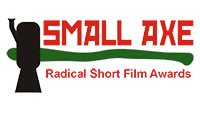The Golden Age
Our Take – Small Axe Radical Short Film Reviews by Cole Diment
The Golden Age, by Hannah R.W. Hamalian, documents the unappreciated and invisible female animators whose labour went into the creation of the Disney films many of us know and some love. Hamalian wishes for us to understand the ideology behind the images here; all too often we may critique Disney for the themes it communicates, less so do we have knowledge of the production processes and their sexist foundation.
In a general sense, female labour in the early film industry wasn’t a taboo. In early cinema we may point to a pantheon of creatives and directors (Lois Weber, Alice Guy-Blaché, Lotte Reiniger and Dorothy Arzner to name a few) who pioneered filmic techniques and genre. However, with the turn to sound and colour film, alongside lengthier and more costly animation, the risk of female creatives heading projects was too much for studio heads and executives; with the added risk of capital due to changes in expensive technology, films had less ideological wiggle room. Subsequently, women were pushed to the background of film production.
The act of revealing the process of production is thus firstly a radical feminist, and secondly a critical socialist, act. Hamalian wishes to see what is behind the image instead of what the image communicates – knowledge of the process of production thus gives us the chance to dismantle the product in more effective critical ways. But not only does Hamalian disconceal production. Her film actively partakes in the manipulation of images; in many shots Hamalian animates famous Disney characters, showing the very animating process that births them. Perhaps my favourite image is of Goofy moving from a neatly outlined dog further and further into expressionist abstraction; a pertinent feminist critique of animation and the sexist film industry.
If anything, however, slowing down and manipulating the film images allows us to fully comprehend the work of these women. When talking with Hannah I was moved by her reaction to this in her creative work: slowing down the film she became mesmerised and silenced by the sheer artistry and technique of the animation. These women, as Hannah shows, are truly artists.
Hannah has asked us to link you to multiple resources about the ongoing inequalities of the animation industry as well as resources for self-love and scholarship opportunities for black indigenous and PoC people:
Black ‘N Animated: https://www.blacknanimated.com/
The Body is Not an Apology: https://thebodyisnotanapology.com/
The Judith Leibowitz Scholarship Fund: https://www.judithleibowitzscholarship.org/about
BlackWmnAnimator: https://www.youtube.com/c/BlkWmnAnimator
